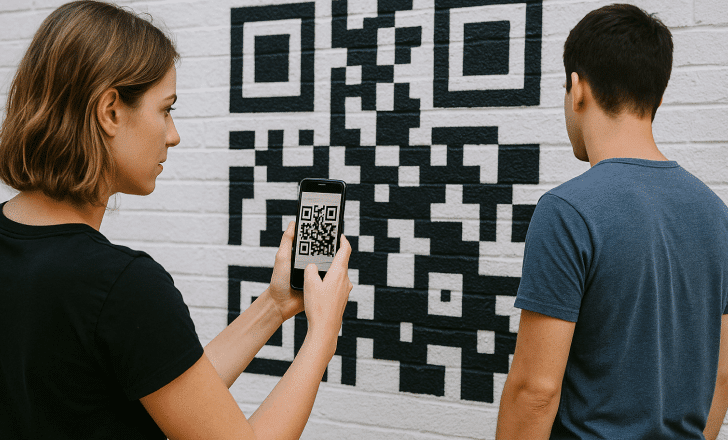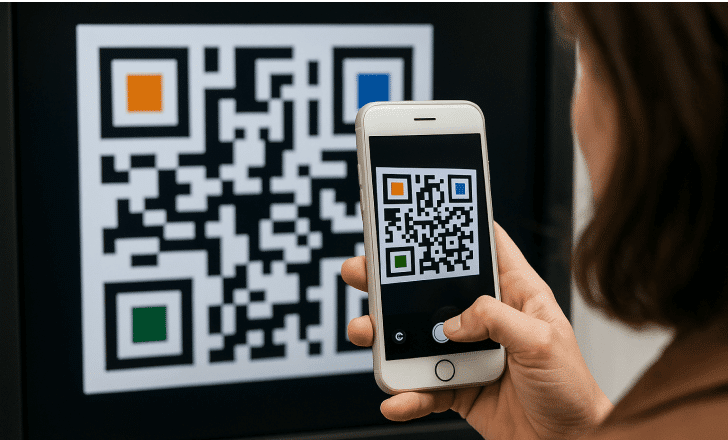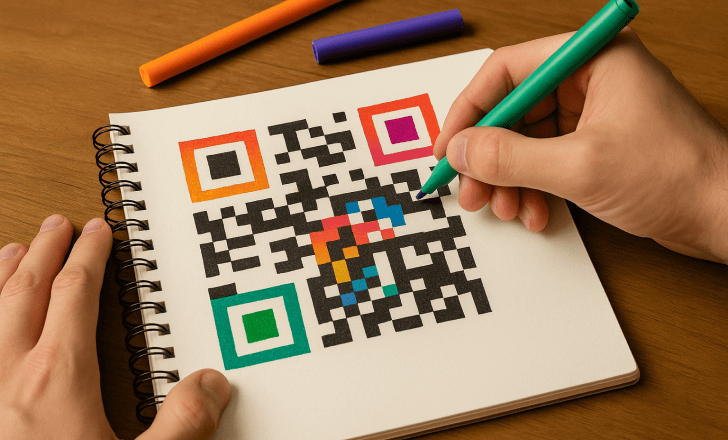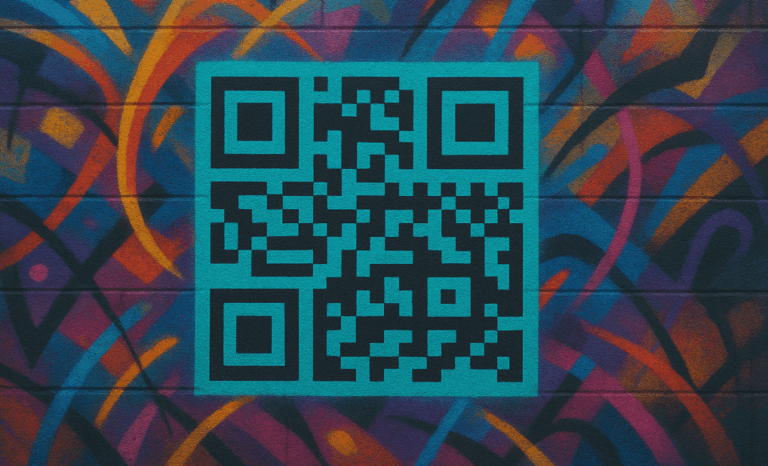A painted QR code bridges the gap between technology and creativity, transforming a simple square matrix into a piece of visual communication that grabs attention. From urban murals to pop-up events, artists, marketers, and small businesses are using paint, stencils, and a touch of imagination to create codes that don’t just work — they wow. With QRCodeKIT, you can design a scannable code, download it in a print-ready format, and take it to the street, wall, or canvas where it becomes a permanent part of your audience’s environment.
Why painted QR codes stand out
While most QR codes are printed on paper or packaging, a painted QR code offers a more tactile, lasting impact. The texture of paint on a wall or object gives depth to the code, and the context — whether it’s on a storefront, in a park, or part of an art installation — can make the act of scanning feel like a discovery. For brands, it’s a way to connect with people in unexpected locations. For artists, it’s an opportunity to merge digital interactivity with analog artistry.
When you create a QR code with QRCodeKIT, you can customize its colors, add a logo, and download it in a high-resolution file format like SVG. This makes it easy to scale your design for large-format painting without losing detail or scan reliability.

QR codes as interactive canvases
QR codes are more than black and white squares — they’re gateways. A well-executed painted QR code can lead to a website, show an image, launch a video, or even open a store’s online menu. Street artists have embedded them into murals, allowing passers-by to scan and reveal hidden layers of meaning or behind-the-scenes footage. Marketers have used them to launch instant discounts or connect people to exclusive events.
The beauty of this approach is that you can tailor the content in real time if you use a dynamic QR code from QRCodeKIT. That means your painted code can link to one thing today and something entirely different tomorrow, without repainting a single pixel.
How to work with QR code stencils
QR code stencils are the secret to a clean, scannable painted QR code. Instead of freehand painting — which risks misaligned squares and broken lines — a stencil ensures each module (the tiny square within the code) is positioned precisely. There are several methods to create stencils:
- Print and cut: Download your QR code from QRCodeKIT as a vector file, print it onto thick card or plastic, and cut out the spaces with a precision knife.
- Laser cutting: For higher durability and sharper lines, use a laser cutter on acrylic or metal sheets.
- Vinyl masking: Apply a removable vinyl cut-out directly to the surface, paint over it, then peel away to reveal the code.
Artists often keep multiple stencil sizes to adapt their code to different locations and surface textures.

Spray paint techniques for bold results
Spray paint is a favorite medium for creating a painted QR code because it’s fast, bold, and versatile. Using black spray paint over a light background provides the highest contrast, which is critical for scannability. However, creative variations are possible — you can reverse the colors, incorporate gradients, or blend in surrounding artwork, as long as the main code elements remain distinct.
For best results, measure and mark the placement before spraying. Keep the nozzle at a consistent distance to ensure even coverage, and protect surrounding areas with masking tape or drop cloths. After painting, test the code immediately with a smartphone to confirm it scans before the paint fully dries.
Making sure people scan your painted QR code
Even the most beautifully painted QR code won’t work if people don’t notice it or know what to do. Placement is key — choose a location with high foot traffic and natural sightlines. Storefront windows, event entrance walls, or popular selfie spots work well. Consider adding visual cues around the code, such as arrows, icons, or thematic artwork that draws attention to the scanning point.
Linking to engaging content is just as important. People scan because they’re curious, so reward that curiosity with something worth their time — an interactive gallery, a discount, an AR experience, or a personalized thank-you message.
Avoiding common mistakes when painting QR codes
Precision matters. A slight misalignment in the stencil, a smudge of paint over a square, or insufficient contrast can render the code unscannable. Avoid placing the code on overly textured surfaces where paint might bleed unpredictably into the material. Also, remember that logos or artwork inside the QR code should be integrated carefully — too large or complex, and they could interfere with the scanning process.
It’s also wise to test at multiple stages. Scan your stencil template before painting, test after the first layer, and again after finishing. If you’re painting outdoors, protect the final piece with a clear, non-yellowing sealant to preserve contrast and durability.
Creative ideas for painted QR codes
The possibilities are wide open. Artists have integrated codes into murals where the modules become part of a larger picture — clouds in a sky, tiles in a floor, or pixels in a portrait. Businesses have painted them on sidewalks leading to their store, turning the walk itself into an interactive experience. Event organizers have used them on temporary structures, pointing visitors to schedules, maps, or live polls.
With a dynamic QR code, you can even update the link seasonally — one painted code can promote summer events, switch to holiday offers, and eventually serve as a permanent brand hub.

Tracking and monitoring your painted QR code
One of the biggest benefits of using QRCodeKIT for a painted QR code is the ability to track scans over time. Even though the code is static on the wall, its destination is dynamic, meaning you can collect data on how many people scan, when they scan, and where they’re scanning from. This feedback can help you measure the success of your painted project and optimize future campaigns.
You can see if certain locations perform better than others, or if a particular type of surrounding artwork drives more interaction. Over time, you’ll build a clearer picture of what gets viewers to pull out their smartphone and connect.
The future of painted QR codes
As more artists and brands explore the intersection of physical art and digital content, painted QR codes will likely become more intricate, more interactive, and more widespread. Advances in materials — from weather-resistant paints to high-detail stencils — will make it easier to maintain scannability over months or years. Integration with AR and location-based experiences could transform every scan into a gateway to a parallel layer of reality.
In the hands of creative minds, a simple square of connected black and white modules becomes more than a code. It becomes a statement, an invitation, and a bridge between the real and the digital.
